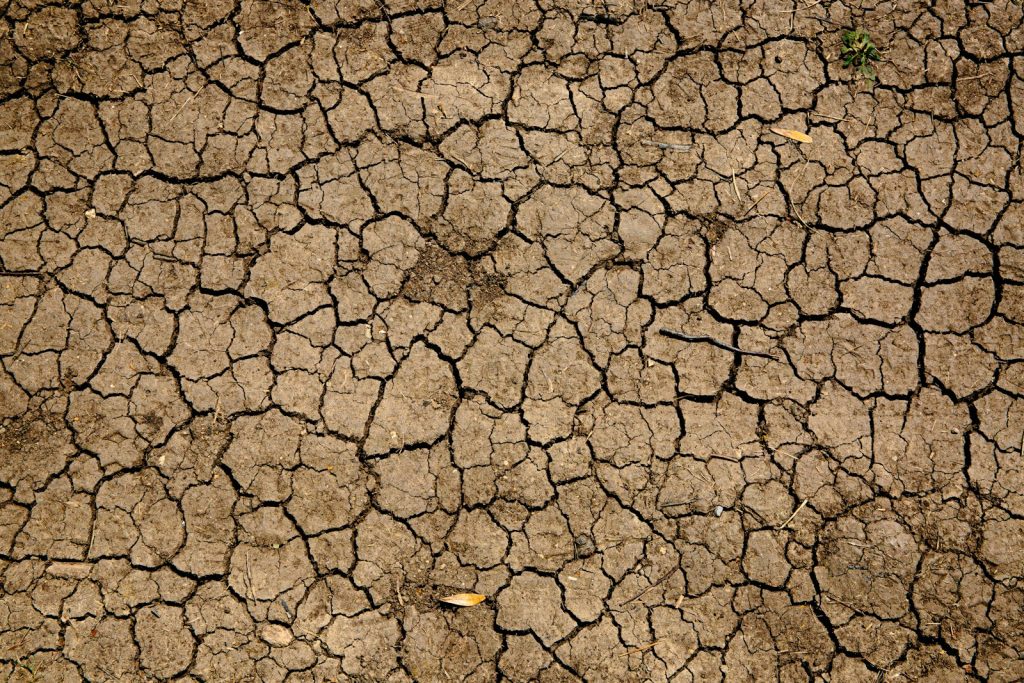Climate change is hitting agriculture hard, and coffee farming is feeling the pressure. It’s not just about the coffee in your cup; it’s about the communities and economies relying on these coffee-growing areas. Rising temperatures and erratic weather patterns make coffee cultivation more challenging.
In many regions, ideal conditions for coffee plants are shifting. Warmer climates stress these plants, affecting both yield and flavor. This shift could change the taste of your favorite coffee blend. Farmers are noticing the economic impact of climate change on coffee production as they strive to keep output steady.
Yet, there is hope. The coffee industry is adapting by using innovative methods to refine farming techniques. There’s a growing focus on sustainable coffee farming practices and developing coffee varieties that can withstand harsh climates. These efforts aim to protect the future of coffee farming, ensuring it remains a cherished beverage for years to come.
Table of Contents
Table: Temperature Changes in Major Coffee Growing Regions
This table illustrates the average temperature changes in key coffee-growing regions over the past 50 years, highlighting areas most affected by climate change.
| Region | Average Temperature Increase (°C) | Time Period |
|---|---|---|
| Brazil | 1.4 | 1970 – 2020 |
| Colombia | 1.2 | 1970 – 2020 |
| Ethiopia | 1.7 | 1970 – 2020 |
| Vietnam | 1.6 | 1970 – 2020 |
How Climate Change is Affecting Coffee-Growing Regions
Climate change hugely impacts coffee-growing regions. Rising temperatures and changing weather present serious challenges for coffee farming. These changes significantly affect this popular crop.
Temperature Changes Affecting Coffee Flavor and Yield
Higher global temperatures seriously impact coffee-growing areas. In places like Brazil and Colombia, increased heat lowers coffee quality and yield. Coffee plants are sensitive and react to these changes. Warmer climates speed up bean ripening, affecting both flavor and quality. This threatens the sustainability of coffee farming. To understand how different variables can affect your coffee experience, consider exploring how oily coffee beans impact flavor and quality.
Unpredictable Rain and Water Shortages
Irregular rainfall and water shortages are growing challenges in coffee regions. Farmers in Ethiopia and Vietnam face unpredictable rain, complicating crop care. Without regular water, coffee plants struggle, leading to lower yields and higher disease risks. This situation calls for innovative farming techniques to adapt to climate change.
Table: Coffee Yield Variations Due to Climate Change
The table below compares coffee yield changes in selected countries as influenced by climate change, signaling productivity shifts and potential economic impacts.
| Country | Yield Change (%) | Period of Study |
|---|---|---|
| Brazil | -15% | 2000 – 2020 |
| Colombia | -10% | 2000 – 2020 |
| Vietnam | -5% | 2000 – 2020 |
| Indonesia | -8% | 2000 – 2020 |
Rising Threat from Pests and Diseases
Climate change increases pest and disease threats to global coffee crops. The coffee berry borer thrives in warmer climates, rapidly spreading in Central America. Diseases like coffee leaf rust are more common, causing severe damage to farms. These threats highlight the financial impact of climate change on coffee, stressing the need for resilient coffee varieties to maintain sustainable production.
For more insights into how climate change affects agriculture, visit the IPCC reports for comprehensive data on these global changes.
Identifying Vulnerable Coffee Growing Areas
Recognizing regions most impacted by climate change is vital for coffee farming. By examining geographical and climate data, we can identify current problems and forecast future threats. This approach aids in making coffee farming more sustainable.
Immediate Risks: Current Coffee Hotspots
- Many coffee-growing regions are already feeling the effects of climate change.
- In Central America, rising temperatures and erratic rainfall pose major issues.
- These shifts result in lower yields and increased pest outbreaks.
- The coffee berry borer, for instance, flourishes in warmer climates, endangering crops.
Farmers face financial hurdles as they try to maintain stable production. Quick solutions like heat-resistant coffee varieties and better shade management are crucial. Organizations like World Coffee Research support these strategies to help secure farmers’ livelihoods.
Looking Ahead: Future Threat Zones
- Climate models indicate that new areas might soon encounter similar challenges.
- Regions in East Africa and Southeast Asia are at risk due to increasing temperatures and unpredictable weather.
- Ethiopia, known for its coffee culture, might see traditional farming areas becoming less practical.
Addressing future challenges requires a focus on agricultural innovation. Developing climate-resilient techniques, such as drought-resistant coffee plants, is key. As the global coffee market changes, sustainable farming becomes more crucial. Mapping temperature changes and spotting at-risk areas can bolster efforts in climate-adaptive agriculture. By staying proactive and innovative, the coffee industry can tackle these challenges, ensuring coffee lovers everywhere continue to enjoy their favorite brews.
The Importance of Coffee Sustainability
As climate patterns change, the coffee industry faces new challenges. These changes affect growing areas, raising concerns about the future. Yet, farmers are adopting strategies to keep coffee production sustainable.
Modern Farming Techniques
Growers tackle climate challenges in coffee farming with modern methods. For example, shade-grown coffee thrives under taller trees. This approach protects plants from heat, reduces soil erosion, and provides a stable environment. In Costa Rica, farmers using shade-growing report fewer soil quality problems, which helps maintain productivity.
Intercropping is another popular method. By planting coffee with other crops, farmers optimize land use, improve soil fertility, and boost biodiversity. This technique naturally controls pests, reducing the need for chemicals and helping coffee withstand climate change. In Colombia, many farmers share success stories of increased yields and less crop damage with this approach.
Developing Climate-Adaptive Coffee Varieties
Breeding programs are crucial for creating climate-resistant coffee varieties. These resilient plants handle temperature changes and diseases better, leading to higher yields in various climates. In Brazil, scientists focus on genetic diversity to cultivate plants suited for different settings, a key aspect of sustainable agriculture. Developing these varieties can be expensive and time-consuming, making widespread adoption challenging. For those interested in coffee’s natural composition, understanding whether coffee beans are legumes can offer surprising insights.
Role of Communities and Policies
Local communities and policymakers play a key role in supporting sustainable coffee practices. Community initiatives often educate farmers on eco-friendly agriculture methods and climate-smart farming. Meanwhile, policies promoting sustainable practices provide needed support for adoption.
For instance, government programs offering subsidies for environmentally friendly agriculture methods or setting sustainability standards can greatly influence cultivation. In Ethiopia, collaborations like these are crucial for addressing climate change’s economic effects on coffee and aligning local practices with global environmental goals.
How Climate Change Affects Coffee Industry Economics
Climate change is transforming the coffee industry. It alters where coffee can grow and its global market, causing notable economic effects. Here, we explore how these changes impact coffee farming and the broader industry.
The Economic Impact of Climate Change on Coffee Prices
Climate change causes coffee prices to swing. Extreme weather, like higher temperatures and irregular rain, disrupts traditional coffee regions, leading to production shifts and global price changes. For example, a drought in a key coffee area can cut supply, raising prices. This affects both growers and consumers, who may pay more for coffee
How Climate Change Affects Coffee Farming Practices
Smallholder farmers, vital for coffee production, face big challenges from climate change. Many lack the resources to adopt climate-resilient techniques. As climate change affects coffee plants, these farmers see reduced yields, impacting their income and the workers relying on the coffee sector. Poor harvests mean fewer jobs and uncertain futures for many.
Key strategies include:
- Promoting sustainable coffee farming practices.
- Developing climate-resilient coffee varieties.
Innovations in coffee agriculture can help address these economic challenges. By investing in research to make coffee adapt, the industry aims to thrive.
How Coffee Farmers Tackle Climate Change
Coffee farmers worldwide face big challenges due to climate change. Rising temperatures and unpredictable weather make growing coffee tougher. Some farmers adapt to keep coffee production strong and sustainable.
How Colombian Coffee Farmers Adapt
In Colombia, coffee is vital for the economy and supports many families. Climate change threatens farming here. Colombian farmers have found clever ways to adjust to these new climate realities, making sustainable coffee farming more important than ever.
- Farmers introduce coffee varieties that can handle higher temperatures and unpredictable rainfall.
- They use shade-grown coffee methods, where coffee plants grow under canopy trees. This shields plants from heat and supports biodiversity, although it can be labor-intensive and might need more land.
- Technology, like apps for weather monitoring and climate threat predictions, helps maintain stable production.
For those interested in exploring unique aspects of coffee, learning about coffee wine and its DIY process can be an intriguing endeavor.
Creative Approaches in Ethiopian Coffee Farming
The Ethiopian highlands, known for their unique coffee regions, also face climate change’s impacts. To keep their farms thriving, Ethiopian farmers use creative solutions. One key approach is intercropping, where coffee grows alongside other crops to improve soil health and boost climate resilience. This requires careful planning to prevent crop competition.
- Community efforts include local cooperatives setting up shared water management systems to ensure plants get enough water, even during dry spells.
- Education is essential. Farmers participate in training programs to learn climate-resilient farming techniques, which help them detect early signs of climate stress and act quickly.
Through these efforts, Ethiopia remains a key player in the global coffee market, ensuring the future of coffee farming despite environmental challenges.
The Future of Coffee in a Changing Climate
Climate change is reshaping coffee production. Warmer temperatures and erratic weather now affect coffee regions like Brazil and Ethiopia. Solutions lie in climate-smart farming and creating coffee plants suited for changing conditions. Sustainable practices are key in helping the industry adjust. Climate-smart agriculture will secure the coffee market’s future as innovation drives change. For sustainable practices, visit the International Coffee Organization.
FAQs
What is the impact of climate change on coffee growing regions?
Climate change disrupts coffee growing regions by altering temperature and rainfall patterns. This affects coffee yield and quality, with areas like Brazil and Ethiopia experiencing reduced production. Farmers must adapt to these changes for sustainable coffee cultivation.
How does rising temperature affect coffee production?
Rising temperatures stress coffee plants, leading to decreased growth and lower yields. High temperatures can also increase pest and disease prevalence, further impacting coffee crops, especially in traditional regions like Central America.
What are the best ways to adapt coffee farming to climate change?
The best ways include diversifying crops, implementing shade-grown techniques, and using drought-resistant coffee varieties. These methods help maintain coffee production and quality in changing climates, as seen in some adaptive farming practices in Colombia.
Should I be concerned about the sustainability of my coffee?
Yes, sustainability is crucial as climate change threatens coffee availability. Choosing sustainably sourced coffee supports environmental practices and helps farmers adapt to climate impacts, ensuring long-term coffee production.
How does climate change influence coffee flavor?
Climate change can alter coffee flavor by affecting bean development due to temperature and rainfall shifts. These changes lead to inconsistent quality and taste, impacting the distinctive profiles of coffee from regions like Ethiopia and Kenya.

